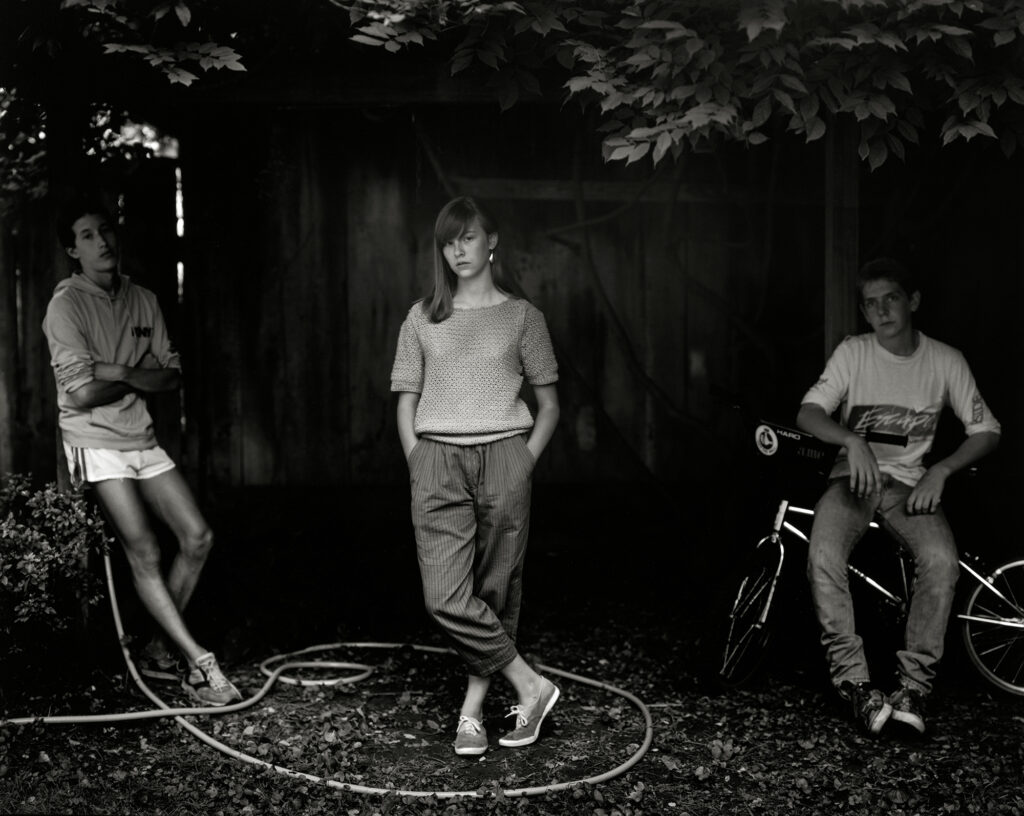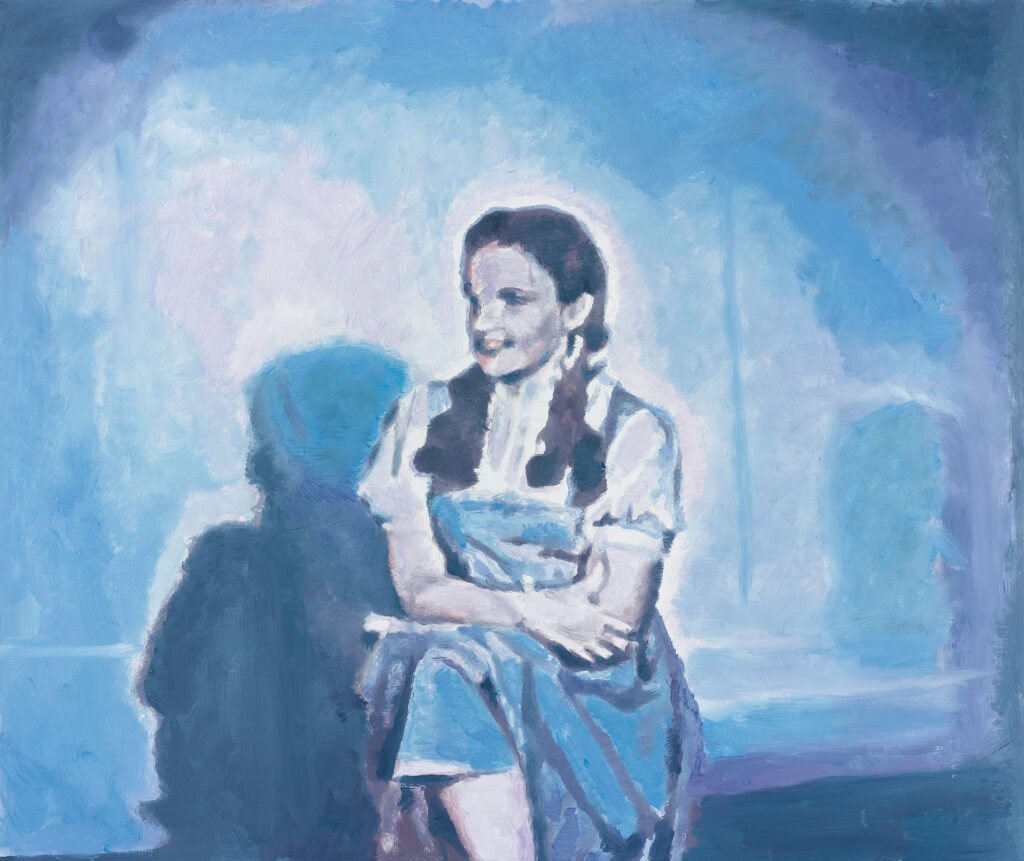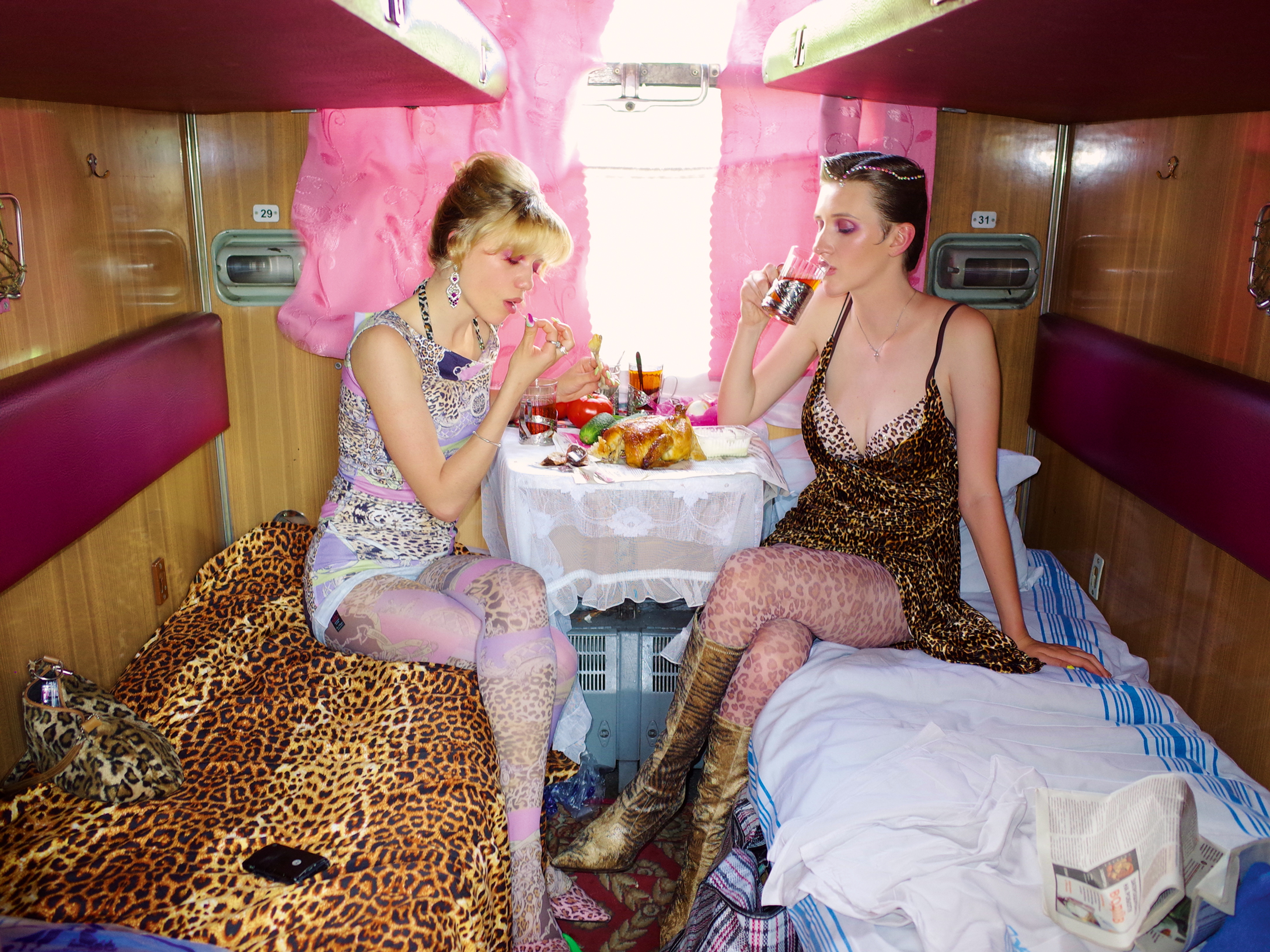
Essays
The Photographers Who Showed the Whimsy and Eros of Ukraine before the War
In images made before the Russian invasion in 2022, three Ukrainian photographers preserve social memory—and witness a nation striving to define its sovereignty.
A bomb shelter in Kyiv. A mass grave in Mariupol. Bodies of dead civilians strewn on the streets of Bucha. While these pictures of Ukraine have flooded international media and brought the country to the attention of foreign spectators, its struggle for independence and self-determination began long before Russia’s full-scale invasion in 2022. Instead of focusing on these images, might a look back to photographic projects predating the present war reanimate the complex richness of the region and pay tribute to the continued vitality of Ukraine’s people?
In the mid-1990s, after the fall of the Soviet Union, Alexander Chekmenev took an official assignment on behalf of the newly formed Ukrainian government to make passport photographs of the elderly and disabled in their homes in Luhansk. What he encountered were people in a state of near total impoverishment who had worked for the government all their lives and received nearly nothing in return. Their Soviet-era apartments were not unlike the one Chekmenev himself had lived in with his grandparents, parents, and sister—often with no running water or gas. Chekmenev’s images from these home visits capture a generation largely on the verge of death, untouched by the promise of their burgeoning democratic nation.

Courtesy the artist and Dewi Lewis Publishing
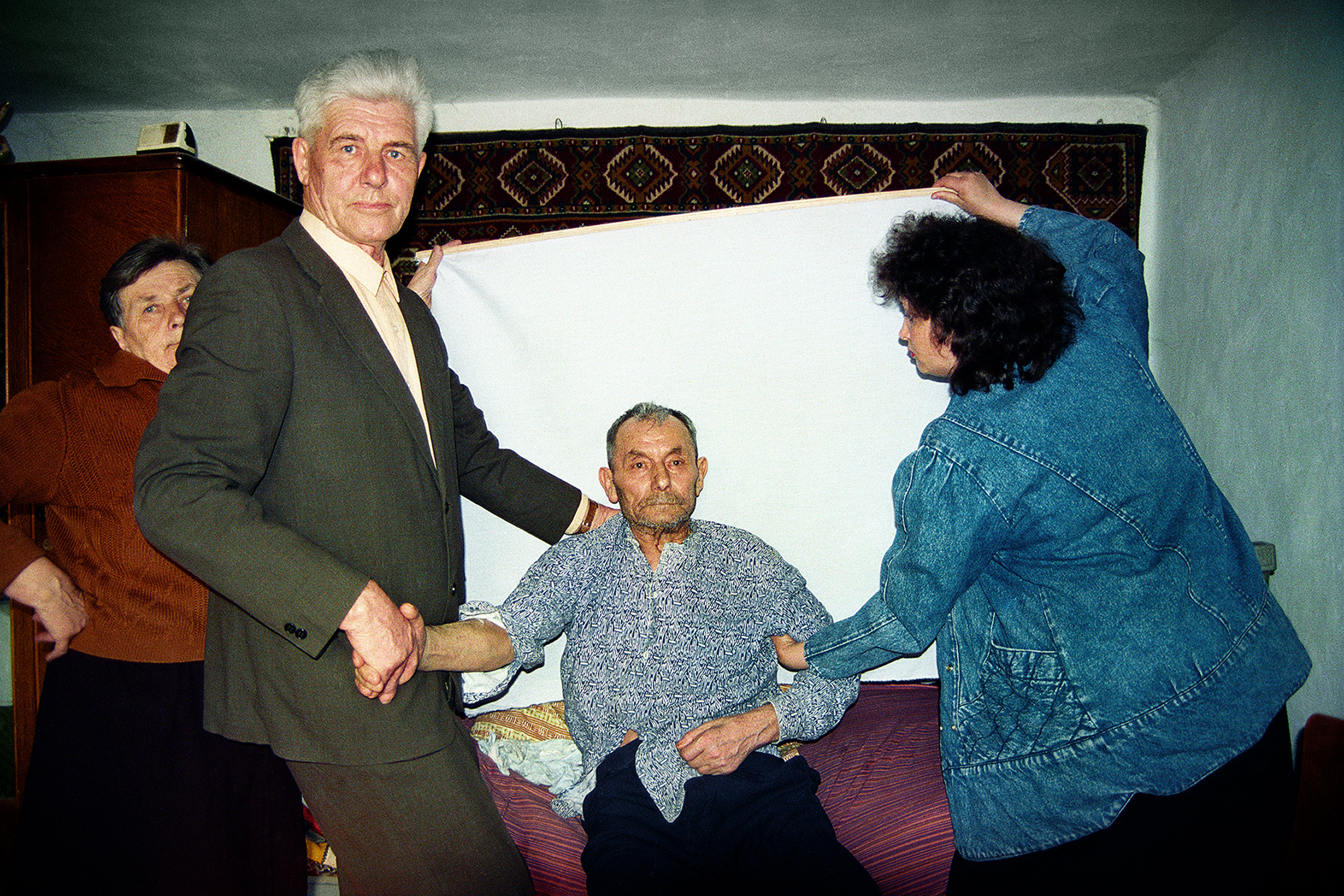
Courtesy the artist and Dewi Lewis Publishing
Working in black and white with one camera, Chekmenev took the official passport-format headshots of weary visages against a portable white backdrop; while using a wide-angle camera with color film, he captured all that lay beyond in photographs that would eventually form the series Passport (1995). “I saw that the frame needed to be widened,” he told me recently. The photographs represent a people entrenched in an old Soviet system that cared little for, deceived, and effectively abandoned the individual. Depicting a generation trapped in time, the pictures teeter on the precipice of uncertainty.
Even in scenes of war, there is tenderness. Even in a landscape of political strife, there is whimsy and eros.
Chekmenev says he never could have predicted his country’s progressive impoverishment, nor that he would become one of Ukraine’s most renowned documentarians: his reportage of the 2014 invasion in the Donbas region and, over the last year, portraits from the streets of war-torn Kyiv and of President Volodymyr Zelensky have appeared in publications ranging from the New York Times to Time magazine. And could the elderly in his photographs, many of whom had lived through World War II and possibly even Stalin’s 1932 forced famine in Ukraine, have predicted that, thirty years after the dissolution of the Soviet Union, Russia would launch a military invasion of their country?
Aperture Magazine Subscription
0.00
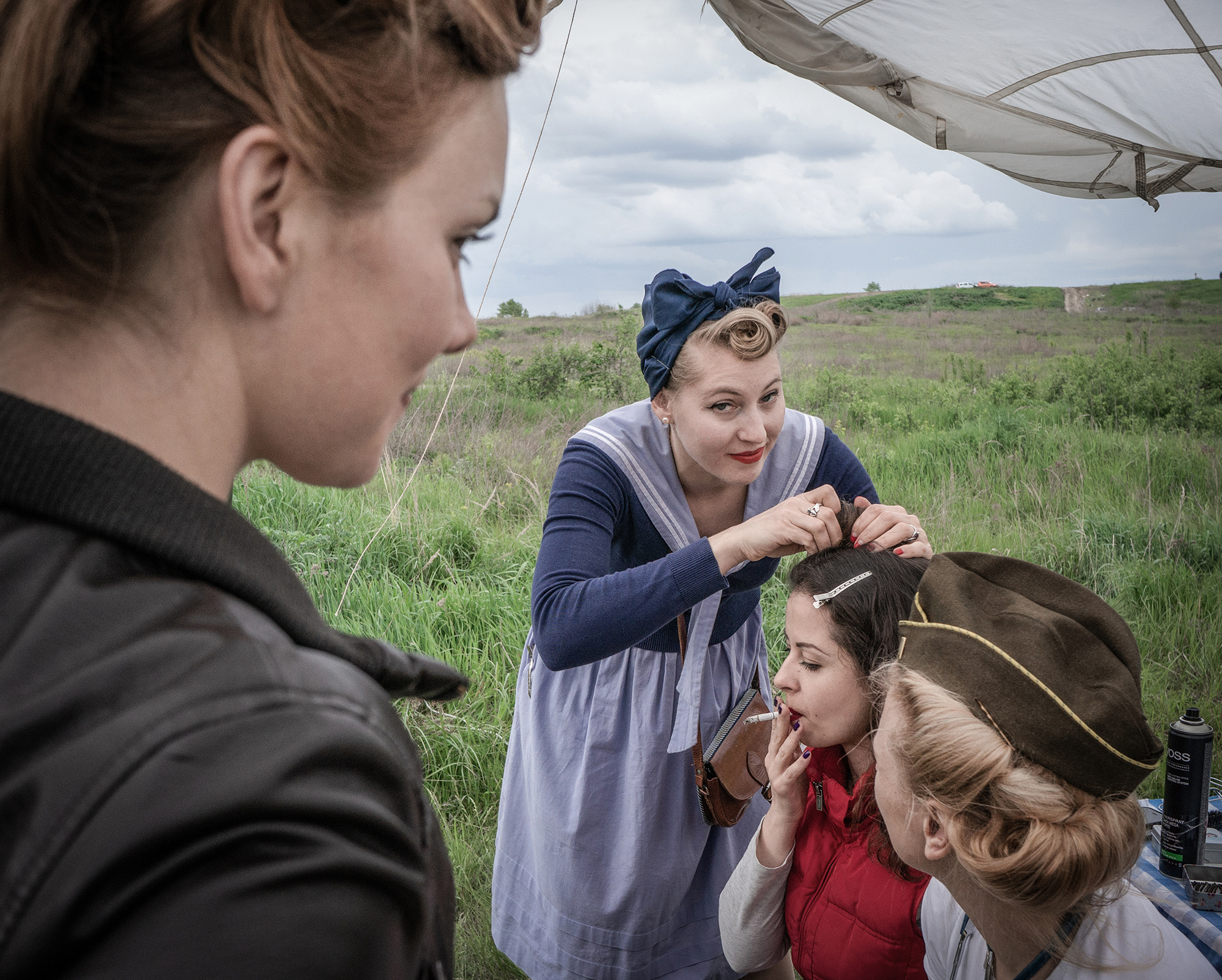
Courtesy the artist and MAPS

Courtesy the artist and MAPS
Ukraine Runs Through It (2019), by the Polish documentary photographer Justyna Mielnikiewicz, chronicles mostly the period from 2014 to 2018 and the individuals who took an active part in a major chapter in Ukraine’s fight for sovereignty. The book uses the Dnipro River as its conceptual through line—a body of water marking a divide between eastern and western Ukraine, but also muddying the notion of clearly delineated territories. Mielnikiewicz, like many of the protagonists in her images, believes this independence movement represents a shift from seeing Ukraine as a former Soviet country to seeing it as part of a new Eastern Europe: “When you say the new Eastern Europe, it becomes like East versus West, West versus East. Whereas when you say ex–Soviet Union, Russia is somehow always in the center,” she explains. Mielnikiewicz’s book includes a 2014 photograph of Petro, a young man serving on Ukraine’s eastern front. He had joined the protest movement at Maidan Nezalezhnosti (Independence Square) in Kyiv earlier that year and wears a teddy bear pinned to his uniform, a gift from a girl he met at the protests.

Courtesy the artist

Courtesy the artist
Even in scenes of war, there is tenderness. Even in a landscape of political strife, there is whimsy and eros. The artist Julie Poly’s project Ukrzaliznytsia (2020), with photographs that act as a love letter to the Ukrainian national rail company, where Poly was briefly employed, is an homage to a childhood spent traveling the country by train, observing its landscapes and inhabitants. Flamboyant colors attest to the joyful, coquettish aesthetic of a country of sunflowers and watermelon, cherry jam and pickles. Each train car has its own patterned carpet, baby-pink floral drapes, and faded yellow tables—a Technicolor balm against the drab gray of all things Soviet. The young people she photographed may even refuse to define themselves in any relation to the USSR. A lanky man with a red rose in his hair plays cards with two elderly women, but his gaze is outward, staring at the camera. He’s seeing something that they cannot.
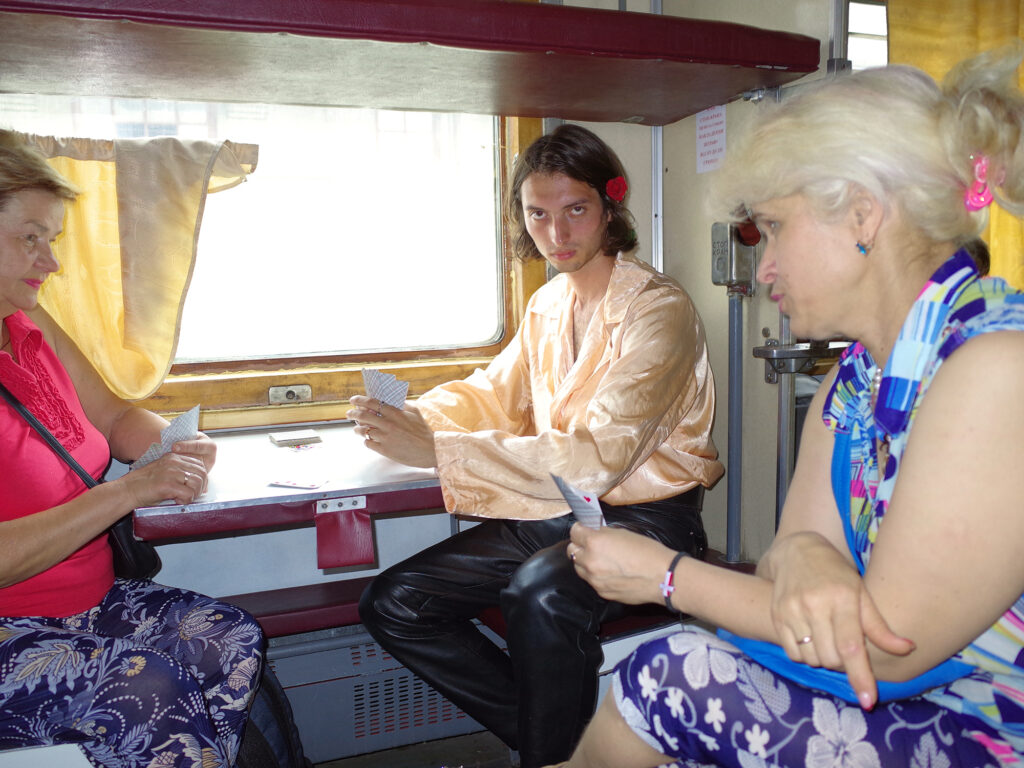
Courtesy the artist
Still, in the face of war, Poly responds with eros: she is putting together an erotic magazine, inspired by vintage pinups and Marilyn Monroe’s visit to US troops, which will be sent to Ukrainian soldiers on the war front. When Russian air strikes began in 2022, Poly fled Ukraine while eight months pregnant. Now residing in Germany, she continues to be optimistic that life in Kyiv will return to its previous vibrancy. She looks at her photographs from Ukrzaliznytsia with nostalgia and admiration. “Ukrzaliznytsia is still transporting people, but now in the context of evacuating them,” Poly says. “The book itself feels like a testament of the past, but I hope these journeys will start up again. I hope these colors, these patterns, these people, the smiles on their faces will all return.”
Viewed together, the works of Chekmenev, Mielnikiewicz, and Poly generate a kind of “alternative photography,” as the critic John Berger once called for—a photography that instead of freezing images in time returns them to a living context, reintegrating the past into the present for the preservation of socio-political memory. More than mere spectacle, these photographs bear witness to a people immersed, consciously or unconsciously, in emergent history—one in which individual stories play out against the backdrop of a nation’s ongoing becoming and its striving to define its sovereignty.
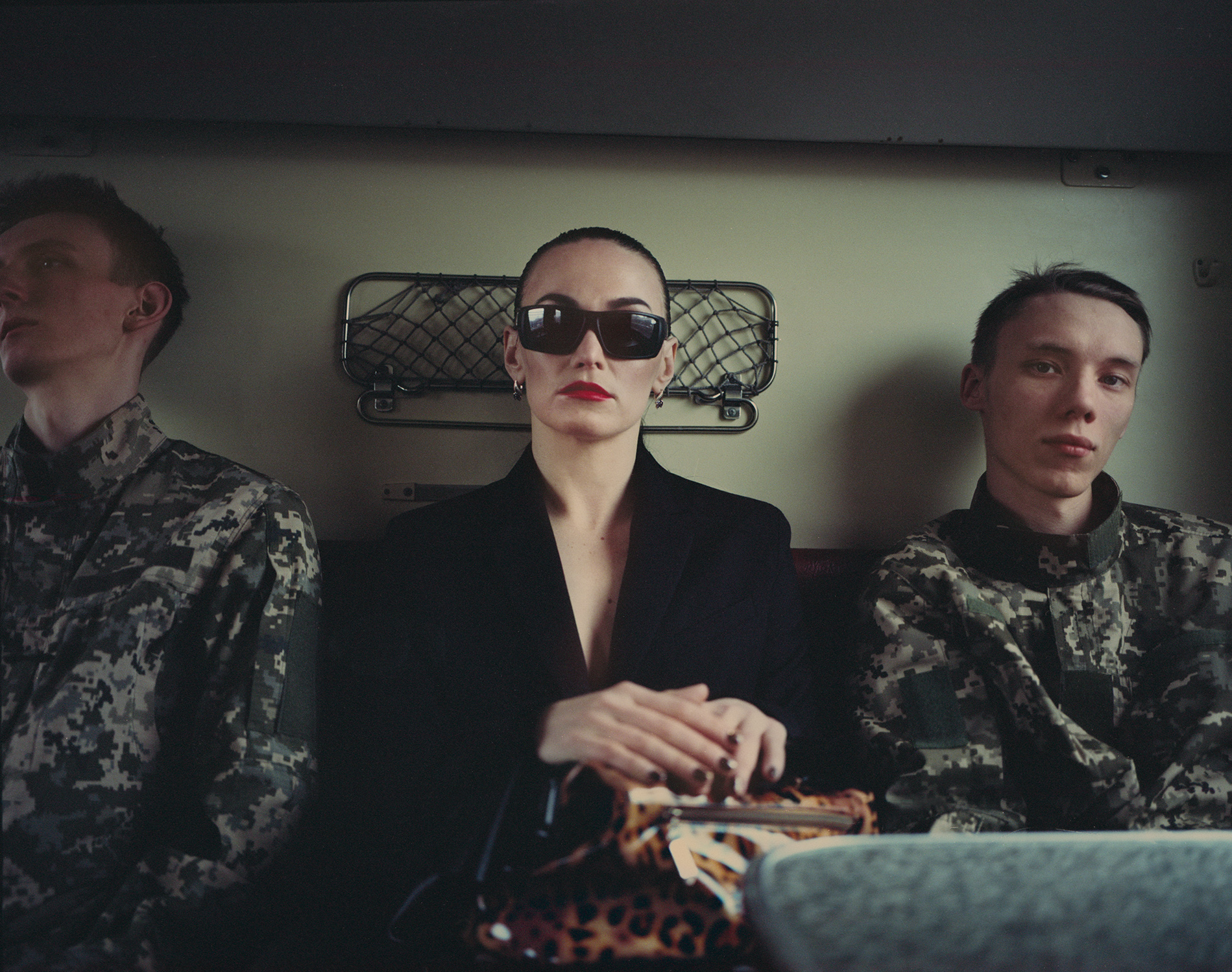
Courtesy the artist

Courtesy the artist and MAPS
This piece originally appeared in Aperture, issue 250, “We Make Pictures in Order to Live.”







